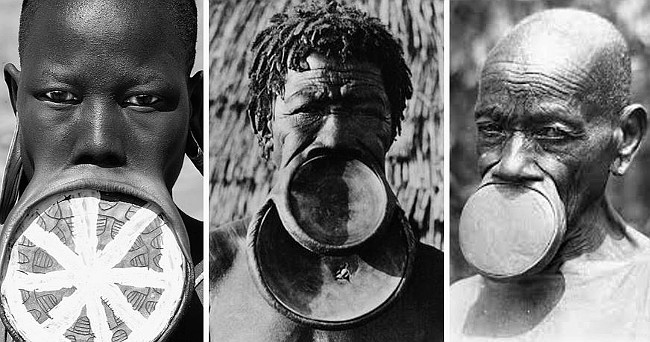In this list we are going to cross historical and geographic divides to offer up some of the most bizarre human fixations with fashion. The human species, while slavishly dedicated to the pursuit of individuality, has nonetheless, throughout history, followed the herd with unwavering dedication when it comes to fashion. Every society in one way or another identifies itself with some unique expression of fashion or personal appearance. In the age of globalization, however, you have to dig deeper to find the individual peculiarities of human style. Sadly, the sharp lines of individual culture have become so blurred that we all tend to dress the same, and look the same.
In ancient times, however – sometimes not even ancient at all – things were different. Societies and cultures were immediately identifiable by the manner and style with which they presented themselves to the world. Invariably this was intended to send a message, be it a warning or an invitation, be it passive or aggressive, and one could usually get a sense of the worldview of any particular race by how they looked. Some are bizarre, others effete, and yet others ridiculously over-cultivated. Here are ten examples of how crazy it could get.

Codpieces, adding a little extra
One of the most famous manly men of European history was Henry the VIII, whose six wives dutifully came and went according to the whims of his sexual appetite. In between, no doubt, numerous concubines and courtesans filled the idle hours. To celebrate these many conquests, Henry loved to be portrayed with his hands on his hips, his legs akimbo and his package wrapped in a codpiece. This was to make sure that the world, and history, could appreciate how well endowed he was. Most historians tend to agree that Henry died of something other than syphilis, although the rumor persists, and those that live by the sword…
The original use of a codpiece was as a component of plated armor, to protect that vital organ on the field of battle. However, as armor became a fashion accoutrement of the aristocracy, there was always a temptation to add an inch or two to impress the girls, and of course the serfs, with the virility of the ruling classes.
The word ‘Cod’ comes form the old English for ‘Scruton’, and piece, of course, is self-explanatory. According to Wikipedia, as a fashion accessory, the style began as an outward growth from the triangular section linking the two separate legs of a pair of hose, intended to conceal the genitals. As time progressed, these became padded, with a view, then, to enhancing rather than concealing. The rest, of course, is history.
The codpiece fell out of use more or less as heavy armor ceased to be used either as battlefield or ceremonial couture. Interestingly, however, the style reappeared in the 1970s when the New York R&B band Cameo featured front-man Larry Blackmon wearing a scarlet plastic codpiece. Later it slipped into usage in Heavy metal costume, most notably Rob Halford of the band Judas Priest, and Axel Rose, who wore a codpiece during the ‘Appetite for Destruction’ tour, while Ian Anderson of Jethro Tull added to the Medieval flavor of his stage performance with a large and suggestive version of that much-loved accessory.

